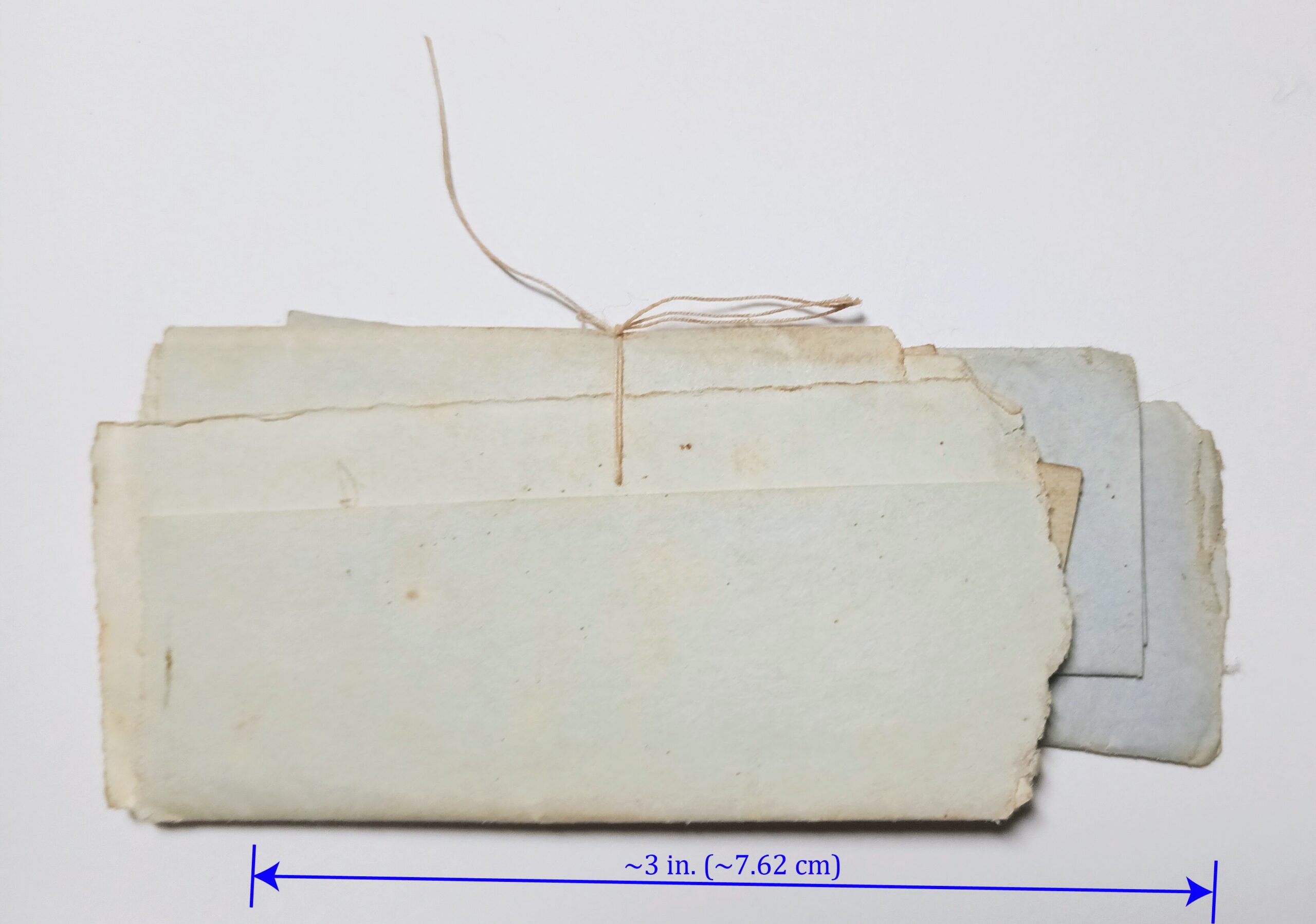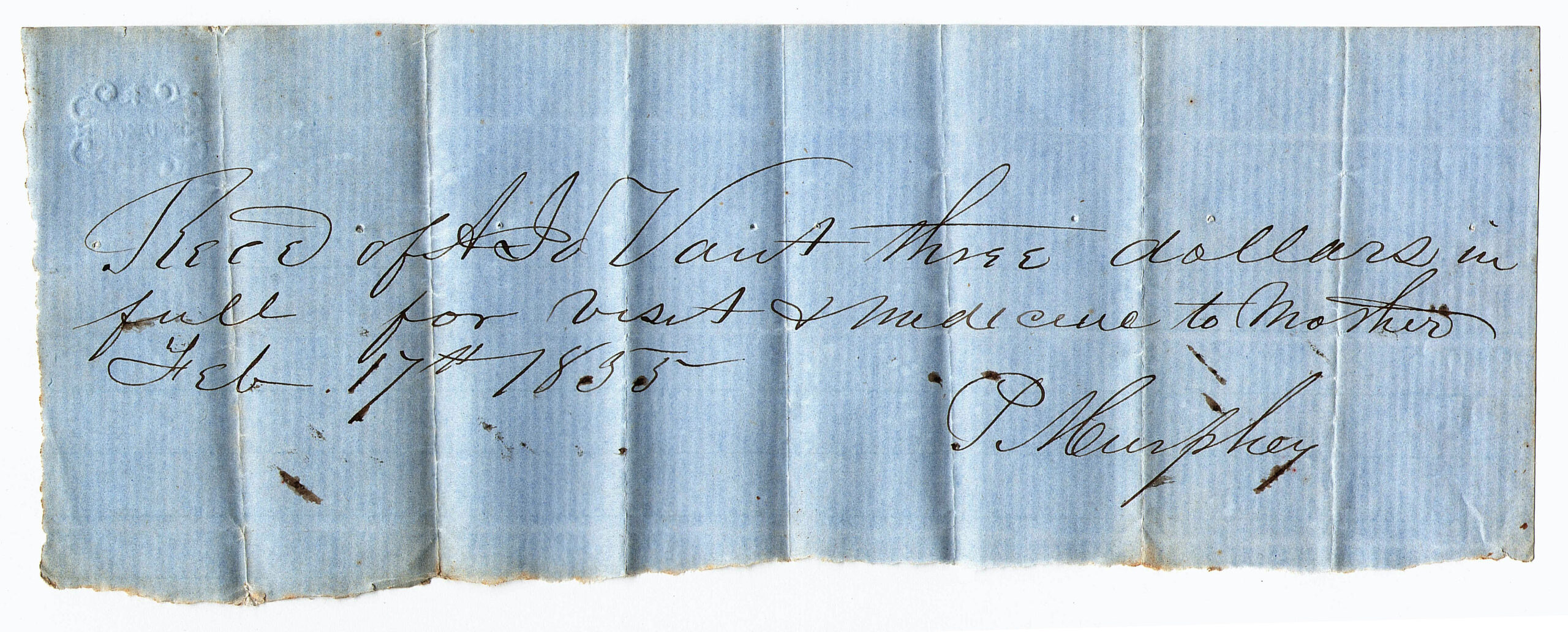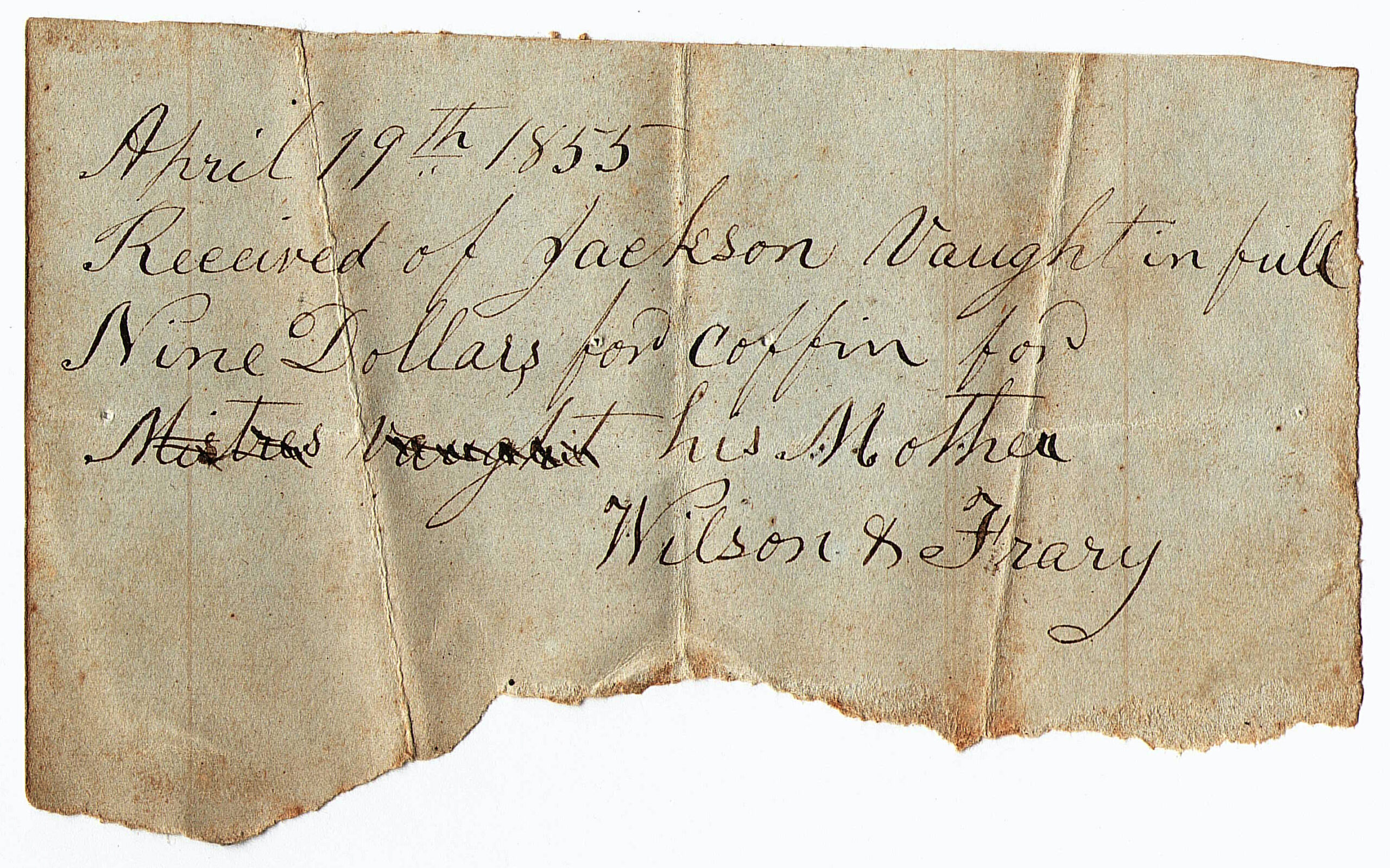I recently acquired a significant tranche of photos, letters, and miscellaneous papers belonging to two of my fifth great-grandparents, Andrew Jackson “A.J.” Vaught (1816–1901) and Mary “Polly” Thomas Vaught (1818–1886) of Johnson County, Indiana. These documents came down to their descendants through their youngest child, Barney Marcellus “Sill” Vaught (1859–1944), and they form part of the collection of David Gray, my third cousin, three times removed—himself a descendant of Barney Vaught. (I am descended, along with many of my relatives on my mother’s side now living in Indiana, Florida, Texas, Kentucky, and Wisconsin, from the oldest Vaught child, Barney’s sister Martha Ann Vaught Magill [1837–1913]). Between March 24 and April 3, 2023, I visited my cousin David and his wife Julie at their mountaintop retreat in North Carolina, where I spent two days scanning and photographing items from his collection. David generously let me keep almost everything I digitized (the full photo album of scans can be viewed here).
One of the most interesting things we found during those two days was a tiny packet of folded papers, about three inches long, pierced with a needle and tied securely with a double strand of thread. So far in my family archival experience, I have never come across anything like this—not in all the dozen-odd boxes of 19th- and early 20th-century Magill papers in my collection.

Our process was somewhat reminiscent of field archaeology, which is destructive even as it turns up new knowledge: after we photographed the intact packet from several angles, David gingerly cut the thread with a pocket knife that had, significantly, belonged to his great-grandfather (and my fifth great-uncle) Barney Vaught.

The four slips of paper tied up in this packet turned out to be four receipts relating to the last illness and funeral of Anna King Vaught (1783–1855), my sixth great-grandmother and the mother of Andrew Jackson “A.J.” Vaught. (Anna, A.J., and his wife Mary are all buried in the Magill-Patterson Cemetery, about half a mile from my late grandparents’ house in Johnson County, Indiana, not far from the city of Franklin.) The holes made by the needle can be clearly seen in the following scanned images, and the accompanying transcriptions use the original punctuation and spelling.
Receipt No. 1:

“Recd of AJ Vaut three dollars in full for visit & medicine to mother Feb. 17th 1855 / P Murphey”
Receipt No. 2:

“Recd of A J Vaught Six dollars for medicine and attention on his mother in her last sickness / Feb the 19 1855 / W A Webb”
Receipt No. 3:

“April 19th 1855 / Received of Jackson Vaught in full Nine Dollars for coffin for Mistres Vaught his Mother / Wilson & Frary” (At first, the funeral home directors seem to have mistakenly believed the coffin was for A.J. Vaught’s wife—Mistress [Mrs.] Vaught—rather than for his mother.)
Receipt No. 4:

“Recd of Andrew J Vaught Six dollars and ten cents in full of bill for shoveling for Anna Vaught decd / Franklin April 20th 1855 / George Hunt & Son”
What stands out to me about this remarkable packet is my grandfather A.J.’s conflicting urges to keep good records but also to put away from him the dark memories of his beloved mother’s last illness and death. A.J. Vaught saved all sorts of ephemera, including letters, receipts, and promissory notes, many of which I now own. He could hardly neglect to keep a record of these significant expenses, but he could also hardly bear to be reminded of their attending circumstances—and his solution was this highly symbolic needle, thread, and knot. A more pointed physical gesture of closure could scarcely be imagined. That knot held for 167 years, 11 months, and 9 days, until the thread was sundered by his great-grandson and fifth great-grandson, using his own son’s pocket knife.
Fellow genealogists and family archivists, have you ever seen anything like this? If you have, I would be love to hear about it.